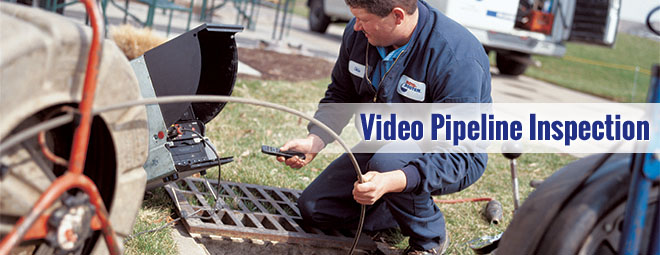When it comes to the health and safety of your home, you should never take any chances. That’s why if you need a pipe inspection, it’s important to choose a method that will allow you to get the most accurate results possible. Video pipe inspections offer a reliable and efficient way to inspect the inside of your pipes, and they can provide you with valuable information about any potential problems.
What Is A Video Inspection Unit?
Video inspection units allow you to inspect an electronic device visually. They can magnify an image up to 50 times and work at distances as close as a few inches. The images are then displayed on a high-definition LCD screen. These units can be handheld or mounted on a boom.
Video inspection is also useful for examining the inside of pipes. Due to its speed and cost, many industries use it. Waterproof industrial inspection cameras are available for video pipe inspection. They can also inspect tanks, caissons, and pressure vessels.
Video inspection units can also help identify hidden sewer pipes. They can also identify developing issues before they become major and costly.
What Is A Camera Test Of Plumbing?
A camera test of plumbing can detect a problem in your pipes. It can also detect blockages or buildup that may be causing leaks. The video footage can be recorded for future reference. The cost of a camera plumbing inspection depends on the length of your plumbing system and its complexity.
A camera inspection can pinpoint the leak’s location if you suspect a leak in your sewer line. This information helps you negotiate repair costs with your plumber. The process can also be used to check a potential new home. If you’ve moved into a new house and suspect that the pipes are faulty, a camera inspection can reveal the problem.
When it comes to the cost of a camera inspection, it depends on the extent of damage and the accessibility of the pipelines. Plumbers can charge from $200 to $1,175 for a simple camera inspection. These costs do not include labor and any necessary repairs. Plumbers in your area will charge from $45 to $150 an hour, depending on the scope of the problem.
How Do You Inspect A Pipe?
Inspecting a pipe is one of the most important steps that you can take to ensure its safety and integrity. Pipes can experience several problems, including corrosion, cracking, and manufacturing issues. Fortunately, there are several ways to check a pipe. Each one of these methods is designed to detect problems and compute the pipeline’s performance.
The simplest method of inspection is a camera inspection. This involves inserting a small camera into a pipe and watching it feed through. The camera will show any problems and help the plumber determine the best repair method. This method can be used to repair small leaks or replace entire sections of a pipeline. The plumber can also use a process known as epoxy relining. This method does not require digging up a pipe and does not disrupt landscaping.
Pipe inspection is a crucial part of maintaining a drainage system. It allows you to detect issues early, preventing more costly repairs.
What Are The Types Of Pipe Inspection?
Video pipe inspection is a technology that allows a professional to see the inside of a pipeline. It can look for leaks, damage, or other problems with various plumbing systems. It is also used to inspect storm drains. Plumbers often use it to see the condition of household connection drain pipes and small-diameter sewer lines.
A video pipe inspection is a great way to prevent future problems with piping systems. It is a quick, cost-effective way to get an overview of your piping system and ensure it’s working properly. A video pipe inspection is recommended if you’re experiencing frequent drain backups or slow drains. These issues can be caused by root intrusion, misalignment, corrosion, or other problems. Also, you should know that pipes are not always visible and that a faulty pipe could lead to costly damage down the road.
When it comes to video pipe inspection, modern technology makes it possible to use a camera that can tilt, pan, and even send a signal to the surface. The footage can be stored in a file for future reference, which can help you determine the problem. For instance, if you have a leaking outdoor water main, a video pipe inspection may help rule out the problem and make it much easier to fix.
What Is A CCTV Drainage Operative?
A CCTV drainage operator works for a drainage company. They monitor the drainage system to detect any problems or blockages. They can identify the exact location of the problems by using a CCTV camera. The CCTV cameras are connected to a footage counter, which helps them note down where the problems are. The video can be recorded for future use and is transmitted back to the operator’s truck. CCTV inspections help determine the drain’s and its pipe’s condition, detect any blockages or cross-connections with other sewer systems, and help maintain compliance with state and federal regulations.
Training CCTV operators requires the candidates to have an aptitude for both innate and learned skills. As a CCTV operator, you need to know how to operate various kinds of equipment and how to perform routine preventive maintenance. You also need to know how to maintain a vehicle’s engine.
What Is CCTV Pipe?
CCTV pipe inspection is a process in which qualified plumbers use a special camera to inspect your pipes. The camera enables them to see inside your pipes to see any blockages or cracks. A qualified plumber can determine the best course of action based on the results. In many cases, CCTV pipe inspection can identify issues before they become major.
CCTV pipe inspection is a cost-effective way to identify leaks, blockages, and other plumbing problems that might not be readily apparent. Since CCTV can provide a birds-eye view of a sewer system, it can detect even the most obscure issues. This high-tech method of pipe inspection is also used during the construction of a drainage system. This method can help determine whether the current sections of a system are sufficient or whether new sections are necessary. Ultimately, it can save you thousands of dollars.
Sewer line CCTV inspection can help identify faulty joints and cracks in your pipes and prevent expensive repairs by pinpointing the problem. Using the procedure is easy and inexpensive. It is recommended for new and older houses, and many insurance companies recommend it as a preventative measure. CCTV pipe inspection is especially important if your home is built on an old foundation. Invasive tree roots can penetrate most pipe materials and often break into the smallest cracks and openings.
How Do Rats Get In Through Drains?
One of the first steps in getting rid of rats is to stop them from getting in your drains. You can prevent them from entering by keeping them away from food sources. This means that you should not pour anything down the drains and ensure that the area around the drains is clean. Rats can cause a lot of damage to your house and spread various diseases.
Another way rats can enter your home is through ventilation pipes. You can prevent them from getting in by installing metal cages above the pipes. These cages will trap rats and prevent them from escaping into the discharge pipe. They can also enter your home by chewing electrical wiring.
Rats are omnivorous and will eat almost anything. Their bodies are so flexible that they can easily squeeze through a hole as small as one inch in diameter. Since they can swim and crawl, rats can also crawl through sewer pipes.
What Is Drain Mapping?
If you are considering a new property or planning on making some improvements to your existing property, consider having your drains mapped. Knowing where your pipes are can help you make construction plans that avoid blockages. Moreover, drain mapping is an important part of site compliance for many commercial sites.
Drain mapping can be helpful for both private and commercial clients. It helps clients establish boundaries and determine who is responsible for a specific drain or pipe system. In addition, knowing where the drains and pipes are located in your area can make it easier to pinpoint faults and perform repairs. It is also helpful for property surveyors and mortgage lenders.
Drain mapping can be performed with a camera or sonar. These devices provide a high-resolution picture of the drainage system. The sonar can also be mounted on a camera for an accurate visual inspection. In some cases, getting permission from local authorities may be necessary before digging up your drain or sewer system.
Conclusion
Video pipe inspection work is really easy. It’s best to be cautious, especially when buying an older home, and underground pipes aren’t usually included in routine real estate inspections. Examine the drains in your house with video pipe inspection equipment and discover if you’ve got buildup and what kind. A transmitter is also included with the video pipe inspection tool. Using this method, technicians can locate the point of blockage or hole above ground and mark it.



